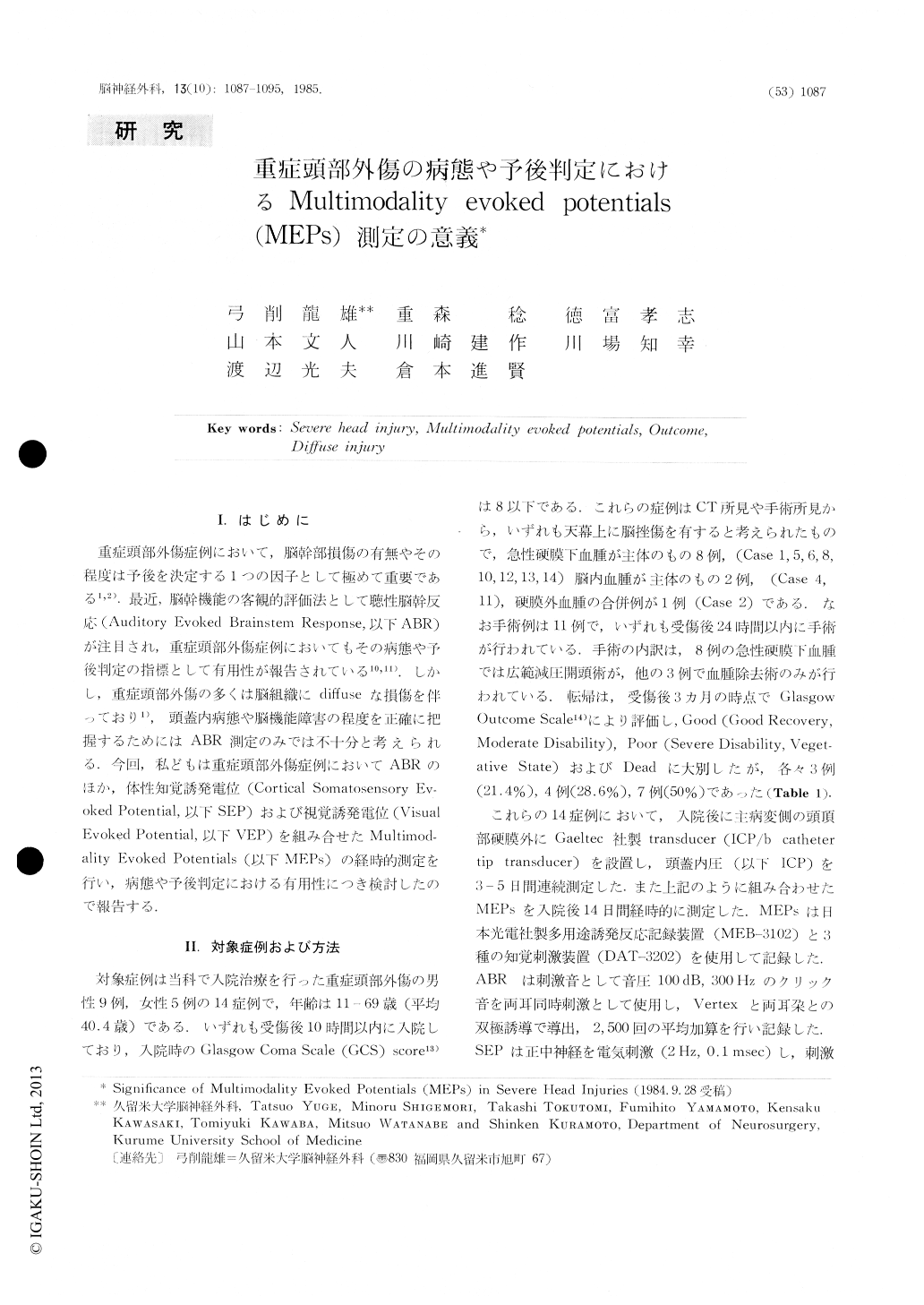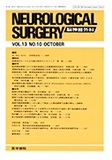Japanese
English
- 有料閲覧
- Abstract 文献概要
- 1ページ目 Look Inside
I.はじめに
重症頭部外傷症例において,脳幹部損傷の有無やその程度は予後を決定する1つの因子として極めて重要である1,2).最近,脳幹機能の客観的評価法として聴性脳幹反応(Auditory Evoked Brainstem Response,以下ABR)が注目され,重症頭部外傷症例においてもその病態や予後判定の指標として有用性が報告されている10,11).しかし,重症頭部外傷の多くは脳組織にdiffuseな損傷を伴っており1),頭蓋内病態や脳機能障害の程度を正確に把握するためにはABR測定のみでは不十分と考えられる.今回,私どもは重症頭部外傷症例においてABRのほか,体性知覚誘発電位(Cortical Somatosensory Ev-oked Potential,以下SEP)および視覚誘発電位(Visual Evoked Potential,以下VEP)を組み合せたMultimod-ality Evoked Potentials(以下MEPs)の経時的測定を行い,病態や予後判定における有用性につき検討したので報告する.
Clinical significance of multimodality evoked poten-tials (MEPs) consisting of auditory evoked brainstem response (ABR), cortical somatosensory evoked poten-tial (SEP) and visual evoked potential (VEP) was studied in 14 cases with severe head injuries. The cases in this series associated with cerebral contusion and/or intracranial mass lesions such as acute sub-dural, intracerebral and acute epidural hematomas and Glasgow Coma Scale (GCS) score was less than 8 in all instances. MEPs were recorded for 14 days after injury and evaluated by MEP grade modified from Greenberg, et al.

Copyright © 1985, Igaku-Shoin Ltd. All rights reserved.


